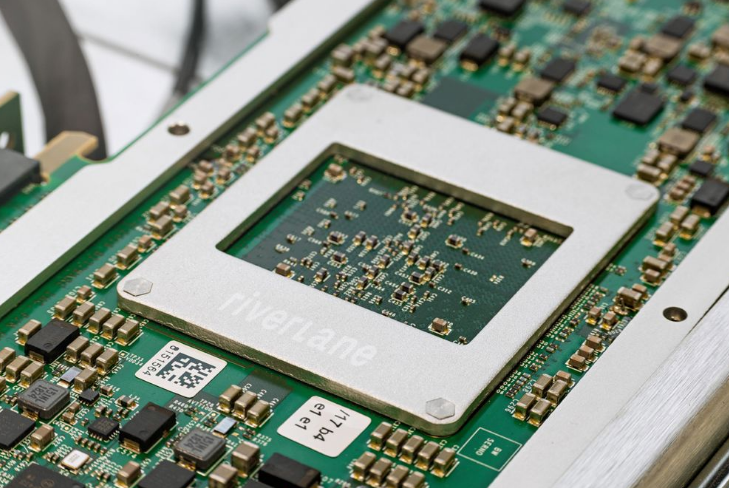Insider Brief
- Quantum computing is a promising technology that could play a pivotal role in solving engineering challenges to improve the climate.
- Quantum computers do not have a magical ability to change the climate, but they could serve as a tool to speed up the process of finding those solution.
- The researchers report that quantum computers could play a role in helping scientists investigate seven promising solutions for climate change that remain computationally vexing.
As the world grapples with the challenge of climate change, scientists are exploring every possible avenue to develop solutions that can help mitigate its damaging effects. Some of innovations necessary to stem the tide of climate change are computationally difficult — if not impossible — to investigate.
One promising technology that could play a pivotal role in solving these computational and engineering challenges is quantum computing.
However, a little expectation-setting. Quantum computers do not have a magical ability to change the climate. Rather, in the right hands of people working on the right solutions, quantum computers could serve as a tool to speed up the process of finding those solutions. There are certain problems that quantum computers could theoretically solve much quicker than our current classical devices.

A recent paper published in the journal Energies by researchers Michela Ricciardi Celsi and Lorenzo Ricciardi Celsi offers a thorough overview at some of the specific ways quantum can help.
1. Improving Forecasting for Renewable Energy Integration
Precise forecasting is crucial for managing the variability in solar and wind resources, enabling reliable integration of renewable energy sources into the grid, the researchers write. Quantum computing, particularly quantum machine learning algorithms, could significantly enhance forecasting capabilities, leading to more accurate simulations and predictions.
“The potential economic gains from enhanced solar forecasting are significant, with estimates from the New England grid operator proposing savings in the tens of millions of dollars,” the researchers note.
2. Optimizing Power Grid Management
Grid operators face the complex task of managing power demand across various time scales while accounting for constraints like transmission limits, safety, reliability, and environmental policies. The researchers call out quantum annealing and Quantum Approximate Optimization Algorithms — QAOA — as promising approaches in addressing these NP-hard scheduling and dispatching problems more effectively than traditional heuristic methods.
The researchers write: “Quantum annealing directly encodes problems into the quantum system’s energy landscape, while QAOA integrates classical optimization with quantum states to discover optimal solutions. The potential computational advantages of these quantum approaches over traditional heuristic methods necessitate further research for a comprehensive understanding of their effectiveness.”
3. Enhancing Power System Stability and Reliability
Ensuring the robustness of the power system against disturbances is crucial for maintaining a reliable and efficient electrical power supply. Quantum algorithms like Grover’s algorithm and the HHL algorithm could be applied to problems related to power system stability and reliability, such as identifying unsafe contingencies or solving differential equations to evaluate system behavior during transient disturbances.
There are some drawbacks, the researchers add: “…HHL’s demanding nature, requiring numerous qubits and reliable low-error operations, makes it less likely for near-term use on available devices.”
4. Improving Battery Technology
Batteries play a vital role in achieving zero-carbon electrification, particularly in electric vehicles and energy storage for renewable sources. Quantum computing can improve battery chemistry simulation, enabling the development of batteries with higher energy density and improved performance. Researchers from Mercedes-Benz and PsiQuantum have already explored using quantum computers to optimize lithium-ion battery electrolytes.
The researchers say that quantum may be the spark — it’s not a good pun if I have to call it out — desperately needed innovation in battery energy density.
The researchers add: “Enhancing the energy density of lithium-ion (Li-ion) batteries allows for cost-effective applications in electric vehicles and energy storage. In the last decade, innovation stagnated, with a 50% improvement in battery energy density from 2011 to 2016, followed by only a 25% increase from 2016 to 2020. The projected improvement is just 17% from 2020 to 2025.”
5. Advancing Solar Cell Production
Current solar cells operate at around 20% efficiency, far below their theoretical potential. Quantum computing could facilitate precise simulations of perovskite crystal structures, which offer up to 40% theoretical efficiency, potentially leading to more efficient and cost-effective solar panels, according to the researchers.
6. Enabling Cost-Effective Green Hydrogen and Ammonia Production
Hydrogen and ammonia are promising alternatives to fossil fuels, but their production processes often involve high energy consumption and costs. Quantum computing could model the energy state of pulse electrolysis and simulate chemical compositions of catalysts and membranes, potentially increasing efficiency and reducing costs for green hydrogen and ammonia production.
In the case of improvements to tapping hydrogen as an alternative fuel source, the researchers write: “… quantum computing offers a solution by modeling the energy state of pulse electrolysis to optimize catalyst usage, thereby increasing efficiency. Additionally, quantum computing can simulate the chemical composition of catalysts and membranes, ensuring the most efficient interactions. This could potentially elevate the efficiency of the electrolysis process to 100 percent, resulting in a 35 percent reduction in hydrogen production costs. When coupled with the discovery of more affordable solar cells through quantum computing (as discussed earlier), the overall cost of hydrogen could be slashed by 60 percent.”
7. Advancing Carbon Capture Technologies
Carbon capture is crucial for achieving net-zero emissions, but current methods are often energy-intensive and costly. Quantum computing could aid in the design of new, efficient solvents for point-source capture and novel adsorbents like metal-organic frameworks (MOFs) for direct-air capture, potentially reducing process costs and enabling wider adoption of these technologies.
As the researchers conclude, “Quantum computing offers a solution by modeling the energy state of pulse electrolysis to optimize catalyst usage, thereby increasing efficiency. Additionally, quantum computing can simulate the chemical composition of catalysts and membranes, ensuring the most efficient interactions.”
The climate tech use cases are many — and their effects possibly transformative to a world seeking solutions to the challenges of a changing climate. But more research remains on both developing quantum computers and using them to address some of the above ways that quantum computing could address climate innovation. The good-better news is that as quantum developers seem to push their algorithms and machines to produce practical results in the field of climate solutions, developers are also pushing their classical computer and supercomputer algorithms to tackle these challenges, too. It’s possible that classical approaches will also work in, for example, improving solar cell efficiency, or making hydrogen more efficiently.
The researchers offer a brief statement on limitations, writing: “However, future work in terms of research and innovation will be primarily aimed at overcoming the current state of quantum technology in the NISQ era, which is characterized by noise and limited resources and thus still prevents the engineering and industrializing of any prototyped technology.”
The paper, titled Quantum Computing as a Game Changer on the Path towards a Net-Zero Economy: A Review of the Main Challenges in the Energy Domain, offers a much deeper analysis than this summary. Please access it for a deeper dive.
















